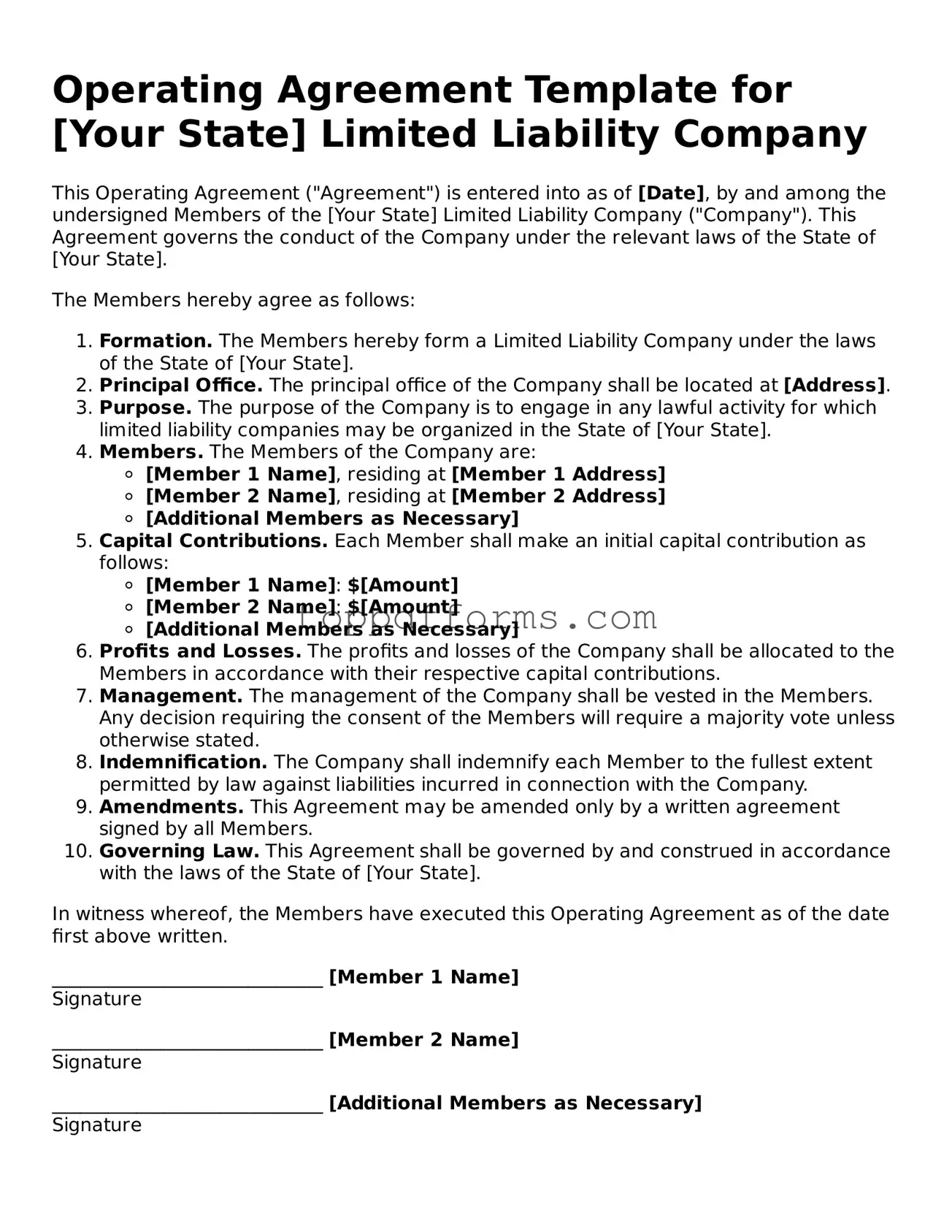Filling out an Operating Agreement form can be a straightforward process, but many people make common mistakes that can lead to confusion or complications down the line. One frequent error is not including all members of the LLC. Every member should be listed clearly. Omitting even one person can create issues regarding ownership and decision-making.
Another mistake is failing to specify each member's ownership percentage. Without this information, disputes may arise later about how profits and losses are shared. It's essential to detail these percentages to avoid misunderstandings.
Some individuals neglect to outline the management structure of the LLC. Clearly defining whether the company will be member-managed or manager-managed is crucial. This decision affects how daily operations will be handled and who has the authority to make decisions.
Inadequate provisions for adding or removing members can lead to complications. It's important to include clear guidelines on how new members can join or how existing members can exit. This ensures that the process is smooth and agreed upon by all parties.
Many people also overlook the importance of detailing the voting rights of each member. Not specifying how votes will be counted or what constitutes a majority can result in confusion when decisions need to be made.
Another common error is failing to address what happens in the event of a member's death or incapacity. Having a plan in place for these situations can prevent disputes among remaining members and ensure the continuity of the business.
Some individuals may not provide enough detail about the purpose of the LLC. A vague description can lead to misunderstandings about the business's direction. Clearly stating the business purpose helps keep everyone aligned.
Not including a dispute resolution process is another mistake. Having a clear method for resolving conflicts can save time and money in the long run. It’s wise to outline steps for mediation or arbitration if disagreements arise.
Additionally, some people forget to review the Operating Agreement regularly. As the business evolves, so should the agreement. Regular reviews can help ensure that the document remains relevant and effective.
Finally, failing to sign and date the document can invalidate the agreement. All members must sign to show their consent and commitment. Without signatures, the agreement may not hold up in legal situations.
